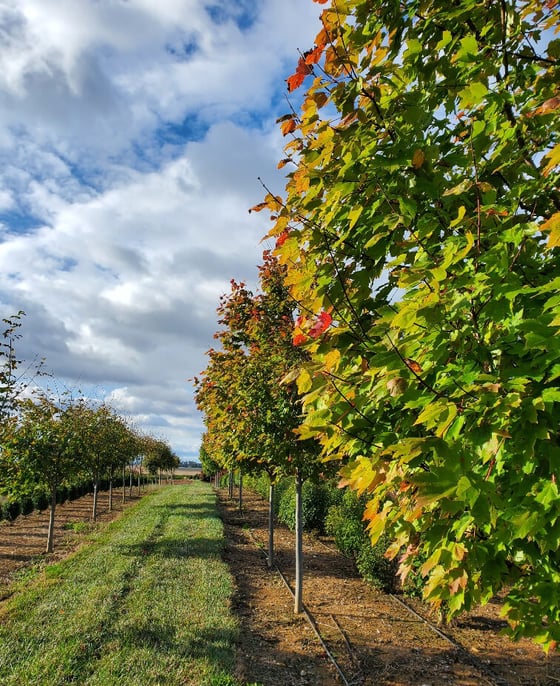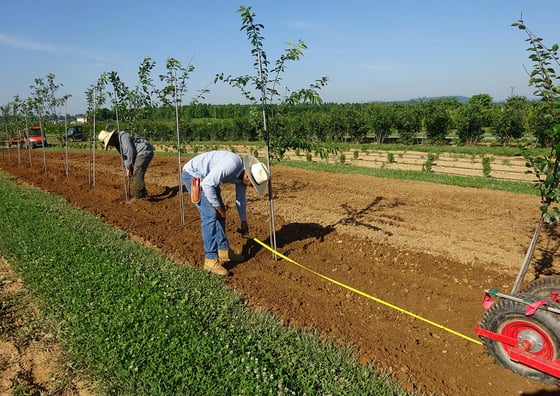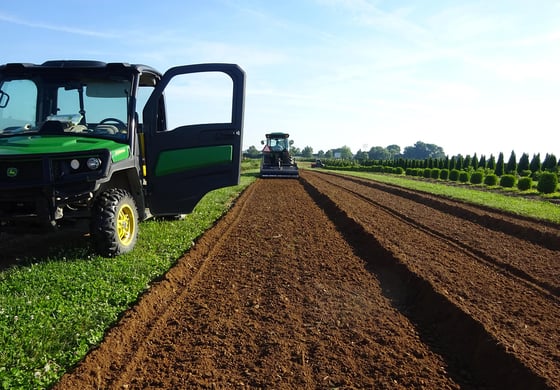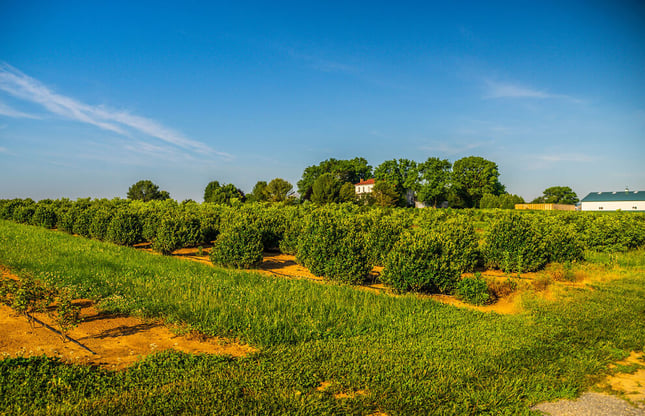The making of a really valuable nursery plant is pretty much hard wired into every detail of the growing process from selecting liners through harvesting. All these activities are tied to an exacting timeline and it begins with the grower’s approach to developing a strategic planting plan for the nursery.
What a grower decides to plant and how much, what they decide to take out of production and how much, is not a simple task because these decisions are subject to sometimes inexplicable fluctuations in demand. It’s a fickle marketplace. Staying on top of market trends and soliciting customer feedback is a critical component of nursery planting plans and long-term strategy.
Planting Plans Based on Research and Word of Mouth
We have to try out new plants every year and we depend on a mix of research and word of mouth to finalize our selections for adding new plants to our catalog.
 When I hear of something new, the first thing I do is research it online: How big does it get? What climate conditions will it tolerate? Will I be competing with container growers? Can we bring it to market quickly enough to succeed financially?
When I hear of something new, the first thing I do is research it online: How big does it get? What climate conditions will it tolerate? Will I be competing with container growers? Can we bring it to market quickly enough to succeed financially?
In this industry, most people are happy to swap stories and information. So it can be extremely valuable to talk with competitors and listen to customers to gauge their awareness and interest levels when new plants are introduced to the marketplace.
After all that screen time and face time, we may take a chance on a new plant, spend five or six years getting it to market size–only to find it's a flop. I've got a couple plants right now that I just love but nobody wants them. It happens all the time. You think you’ve got a plant that’s really special and should be in demand, you show it to the customer and they just nod politely and buy what they always buy. But –and this is important– the opposite happens, too. Something that you expected would fail at sale time turns out to be a wild success.
Sometimes you are certain the demand is there. Other times, you're just speculating. When you do finally decide what you’re going to grow and how much, it’s wise to start conservatively with that new item. A soft launch allows you time to adjust your inventory up or down when you have a better idea of the demand. And again, the bet takes five or more years to become either a win or a loss.
Strategic Planting Plans Based On Demand
 For stability, it is important to keep a diverse catalog. To do that effectively requires an analysis of field space. Increase inventory on popular species, research new specialty plants, and decide what stock is taking up space for no reason.
For stability, it is important to keep a diverse catalog. To do that effectively requires an analysis of field space. Increase inventory on popular species, research new specialty plants, and decide what stock is taking up space for no reason.
You’ve got to always keep an eye on what you’ve got in stock for next year. For example, we allocated 1,000 yearly for Green Giant Arborvitae but sold upwards of 1,500. While this was beneficial for business, we had to halt sales to preserve next year's inventory. We readjusted our plan to grow 1,600 next year to keep up with demand in our yearly planting plans. These adjustments are common in the industry. When you pay attention to what the customers want to buy, it automatically takes some of the need for research off your shoulders.
Reducing Guesswork with Meticulous Record Keeping
Some plants will trend for a few years, and then the demand may decrease. This puts growers in a tricky situation. You have to decide between maintaining inventory or eliminating plants that aren't moving to make room for new plants that are trending. The longer you’re in the industry, the easier it becomes to make these judgment calls.
At Waverly Farm, we maintain a three-year document that tracks the average number of cultivars we sell yearly. This keeps a reliable running record of what’s performing and what may just be wasting labor, energy, and space. We operate on current knowledge to make the best decisions about planting strategy, and our previous information helps relieve some of the guessing that can feel burdensome.
Maintaining a Diverse Inventory to Offset Growth Gaps
 Growth gaps are common nationwide. And they have a domino effect on the inventory at all wholesale nurseries. For example, growers in Oregon are among the dominant producers of the liners for plants that are popular in other regions. One year, they lost the whole crop from winter damage. That produces a ripple effect. It can take a long time to recover from that.
Growth gaps are common nationwide. And they have a domino effect on the inventory at all wholesale nurseries. For example, growers in Oregon are among the dominant producers of the liners for plants that are popular in other regions. One year, they lost the whole crop from winter damage. That produces a ripple effect. It can take a long time to recover from that.
Some plants like Arborvitae and Lilacs are on a five-year growth plan. In contrast, others like Boxwood and Hollies take ten years. If you’re gapped out, it can take a painfully long time to recover and rebuild inventory.
The best way to maintain stability when you are hit by circumstances beyond your control? Develop strategic planting plans by doing the research, staying connected with market trends, building a diverse catalog, and diligently tracking inventory over the years.
Our ebook “Why Accurate Plant Pricing is Good for Everyone” will give you an additional perspective on how field production systems and techniques affect the delicate balance between price and value.





